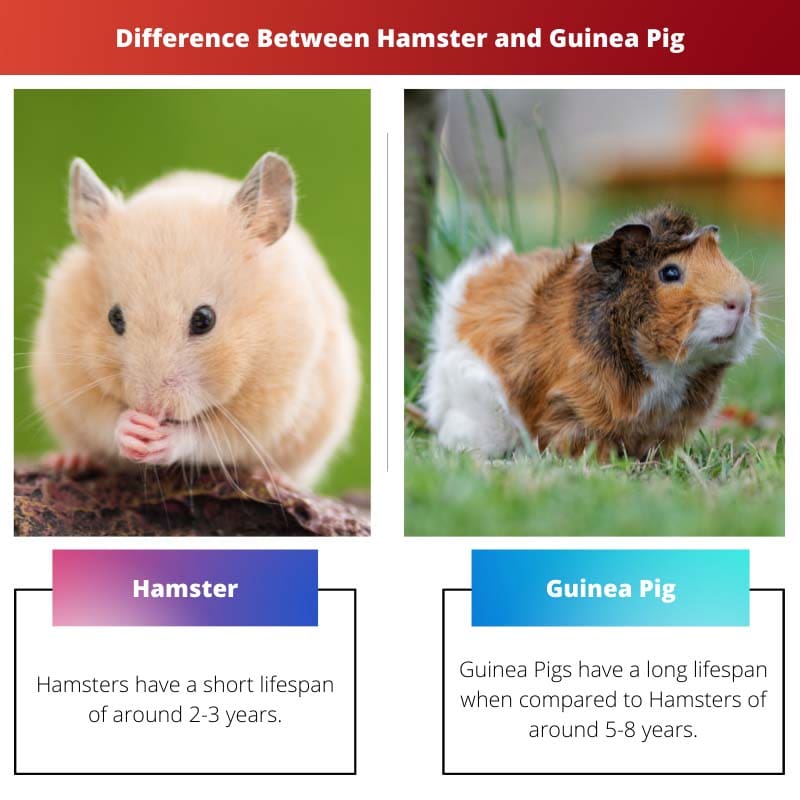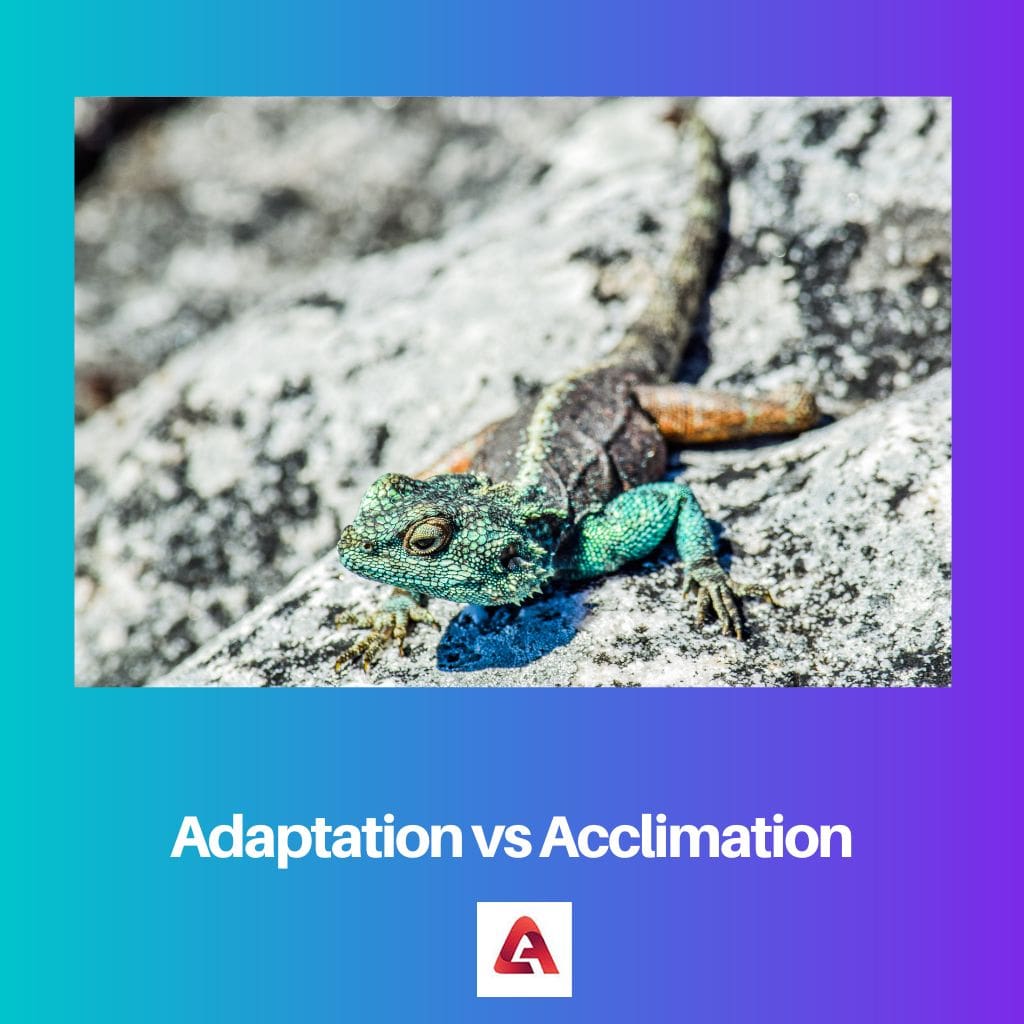Hamsters and Guinea Pigs are very adorable and are liked by pet lovers, both kids and adults. For new pet owners, Hamsters and Guinea Pigs are the best choices.
Both the pigs have many similarities and differences, and they differ according to their life span, nutrition intake, behaviour, care requirements, and so on.
Key Takeaways
- Hamsters are smaller than guinea pigs and have shorter, stubbier tails, while guinea pigs are larger and have longer, slender tails.
- Hamsters are nocturnal and more solitary animals, while guinea pigs are diurnal and social animals that must be kept in pairs or groups.
- Hamsters have cheek pouches that they use to store food, while guinea pigs do not have cheek pouches.
Hamster vs Guinea Pig
Hamsters are small rodents that are 5-7 inches in length. They are solitary animals and should be kept alone in their own cage. Guinea pigs are larger rodents that can grow up to 10-12 inches in length. They are social animals and are to be kept in pairs or small groups.
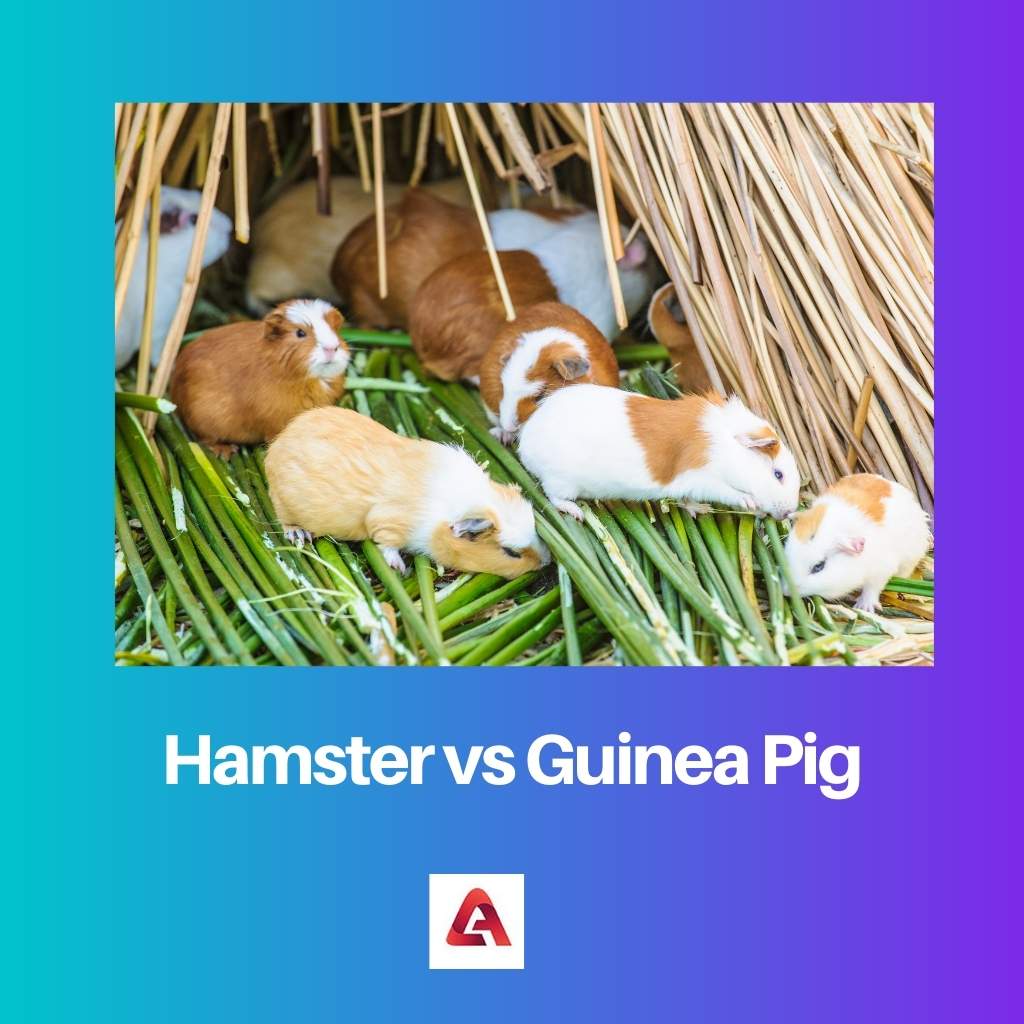
Hamsters spend most of their time underground in the wild to withstand extreme temperatures. They have small ears and tails covered by thin fur and their body has thick fur, which helps them withstand cold nights.
Hamsters belong to the Rodent family, similar to rats. Guinea Pigs will be around 20-30cm if fully grown. They belong to the Rodent family-like Hamsters and rats. Guinea Pigs have a long lifespan and are more friendly to kids and pet lovers.
They are herbivorous and are not nocturnal. Guinea Pigs have different features and characteristics when compared to Hamsters.
Comparison Table
| Parameters of Comparison | Hamster Pig | Guinea Pig |
|---|---|---|
| Lifespan | Hamsters have a short lifespan of around 2-3 years. | Guinea Pigs have a long lifespan when compared to Hamsters of around 5-8 years. |
| Nocturnal | Hamsters are nocturnal and do their usual activities during their nights. | Guinea Pigs are not nocturnal and are short sleepers, they take their naps whenever required according to their domestication. |
| Sociable | Hamsters are sociable but not to an extent. They are very aggressive in their companion. | Guinea Pigs are very sociable that they become depressed and even die when left in isolation. |
| Size | Hamsters are 5-15 cm in height when fully grown. | Guinea Pigs are 20-30 cm in height. |
| Eaters | Hamsters are omnivorous. | Guinea Pigs are vegan and herbivorous. |
What is Hamster Pig?
Hamsters belong to the family of Rodents. They are very affectionate and cuddle when handled with proper care. It is a perfect pet for kids and adults to take care of.
They are nocturnal and do their regular activities at night. When adopting such Hamsters, it is advised to keep only one Hamster per cage, as they are aggressive when kept together.
Hamsters are omnivorous and eat insects other than large meat. They have a short lifespan and are not much sociable, as they become aggressive when kept together, especially regarding food sharing.
They are furry and are best as pets. They would store the food in their cheeks and have them slowly.
Hamsters are advised to be kept in a living away from bedrooms, as they are nocturnal and have the habit of whisking at night. Hamsters’ offspring are born without sight, which makes them unique.
Their offspring will have no hair too. They are good and crawling and climbing.
Hamsters are physically capable of doing all sports activities, such as using exercise balls, running on wheels, and so on. They are good at being active all the time, and they do not take short naps.
They require attention and playtime. They are also known as attention seekers.
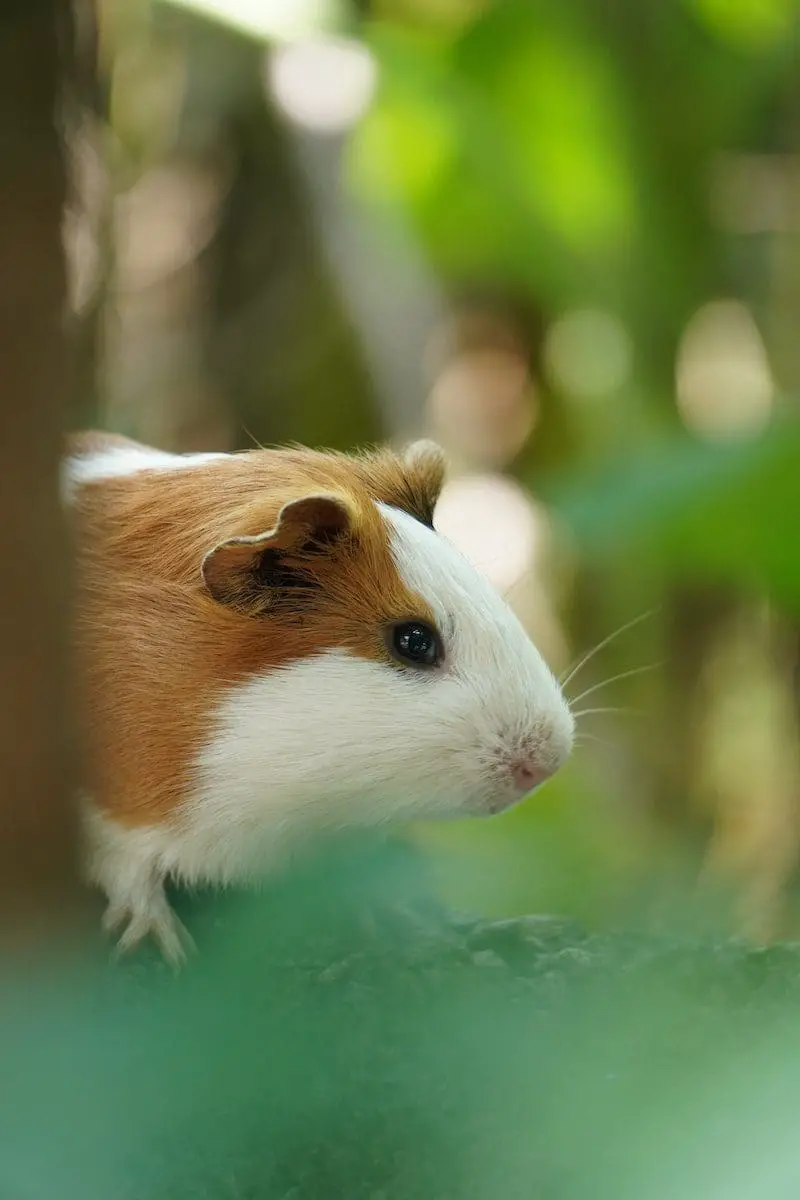
What is Guinea Pig?
Guinea Pig comes from the family of Rodents. They are not nocturnal and are quite opposite in their characteristics and features when compared to Hamsters.
Guinea Pigs are herbivorous and vegan in their food habits. They are very friendly and active. They are compact and form to be the best option for kids to play with.
Guinea Pigs need interaction and attention. They fall sick or depressed when left alone. They may even die when left isolated. They interact very quickly with their pet owners.
They do not carry food in their cheeks like Hamsters. They require fresh food and a well-equipped environment to stay healthy and happy.
Guinea Pig does not have a good build as Hamsters. They do not run or climb actively like Hamsters. They cannot crawl and climb in their cages.
They cannot run on wheels, and it is due to their delicate spins, which are not suitable for such activities. They have a long lifespan, around 5-8 years.
Guinea Pigs have different breeds but belong to the same family as Hamsters. Their offspring are produced with large eyes, good eyesight, and thick hair with the ability to run and crawl.
Guinea Pigs take short naps or sleep during their flexible hours whenever they need.
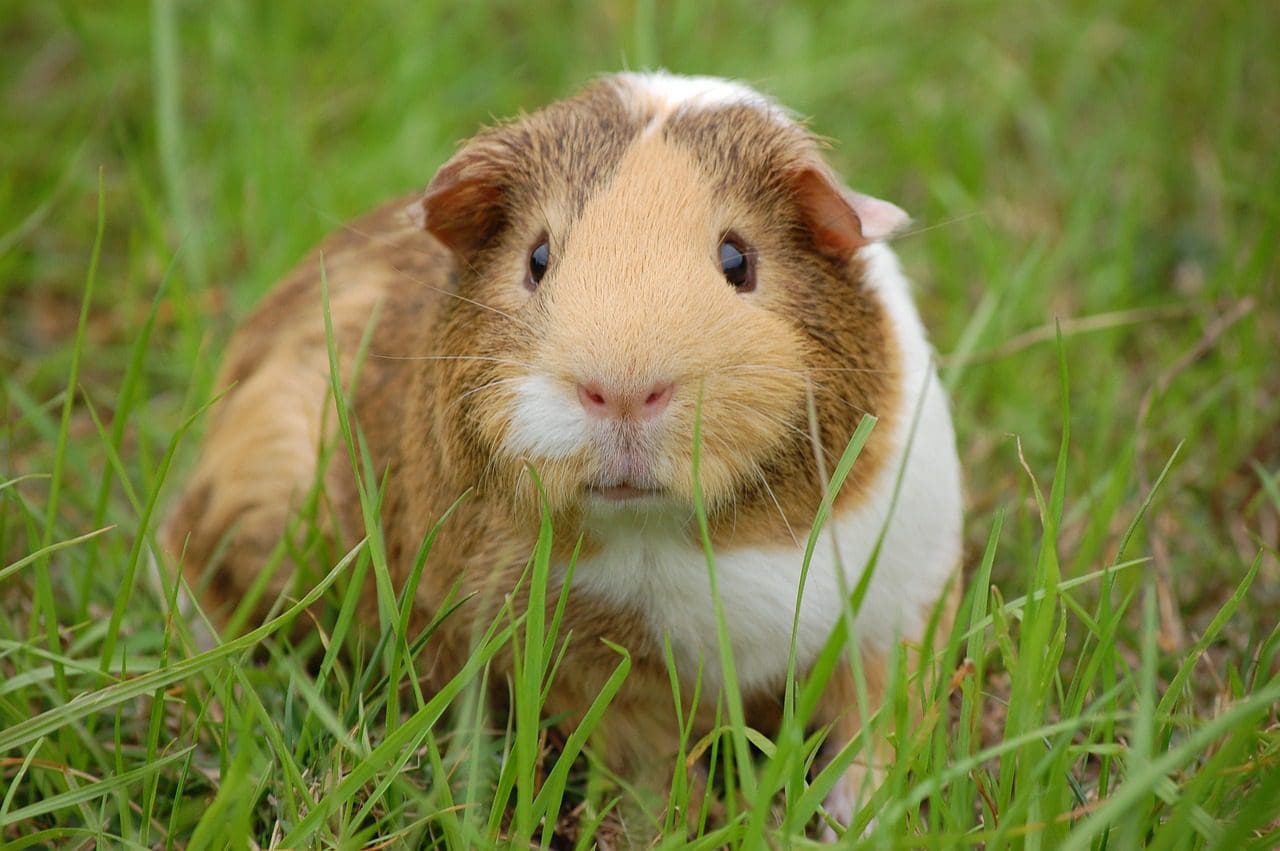
Main Differences Between Hamster and Guinea Pig
- Hamster Pig is of height 5-15cm, whereas Guinea Pig is of the height 20-30cm when fully grown.
- Hamster Pig has a short lifespan of 2-3 years, whereas Guinea Pig has a lifespan of 5-8 years which is quite longer than that of Hamster.
- Hamster Pig produces their offspring that has no eyesight and hair, whereas Guinea Pig has their offspring produced with good eyesight and fur.
- Hamster is very aggressive when kept with their companion, whereas Guinea Pig is very friendly and not aggressive.
- Hamsters can tolerate isolation to some extent, whereas Guinea pigs can die when isolated. They get depressed when isolated.
